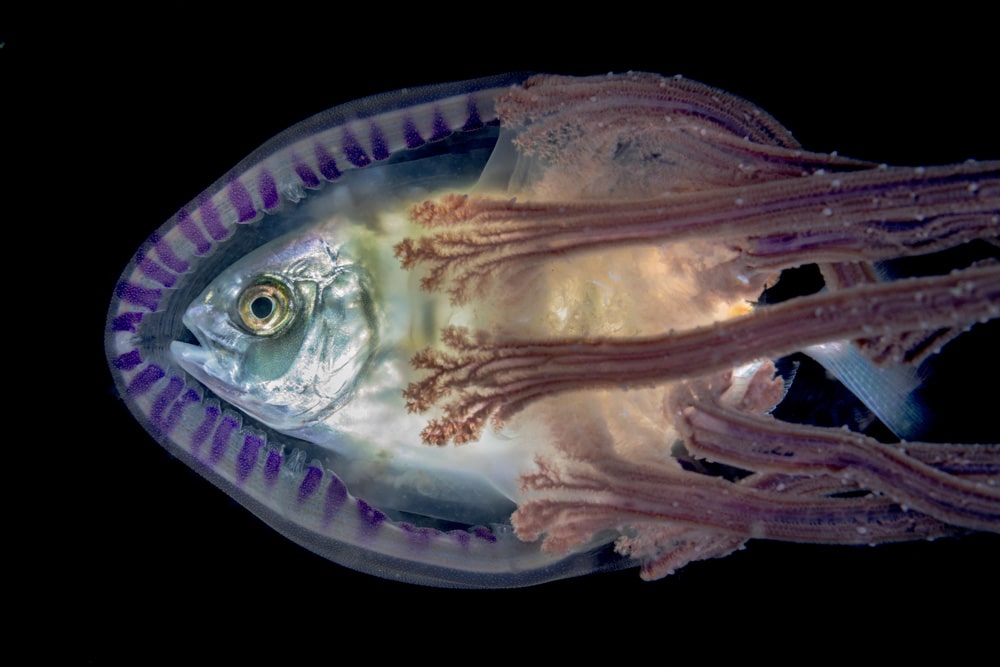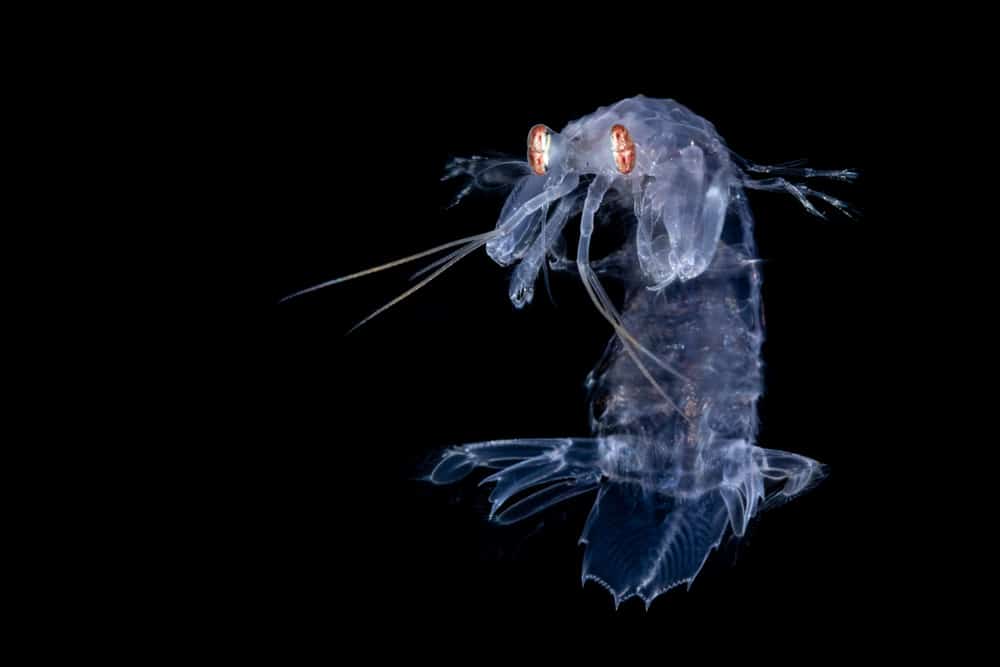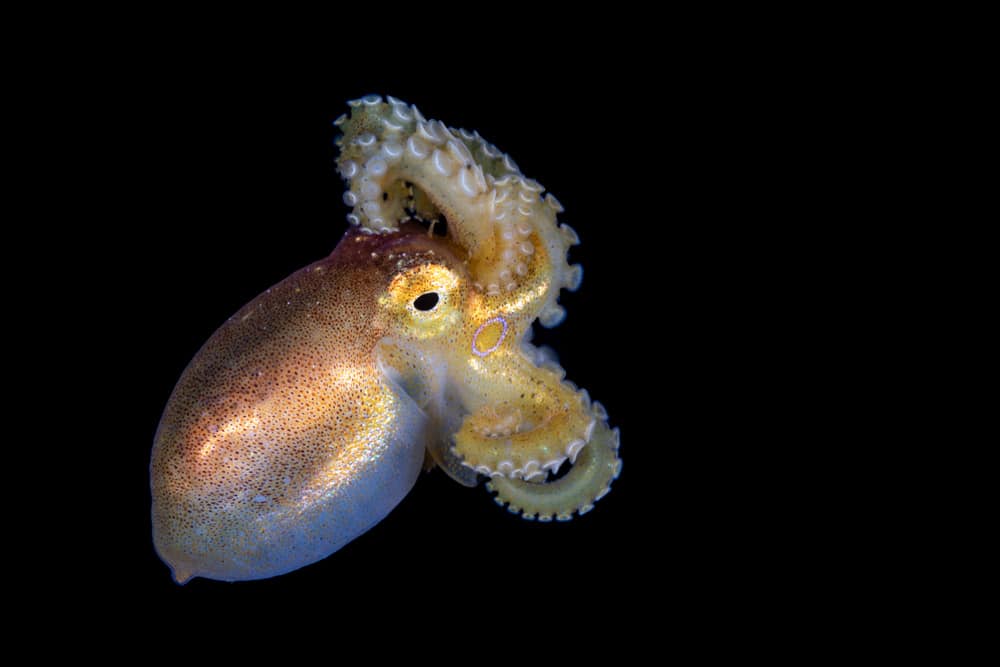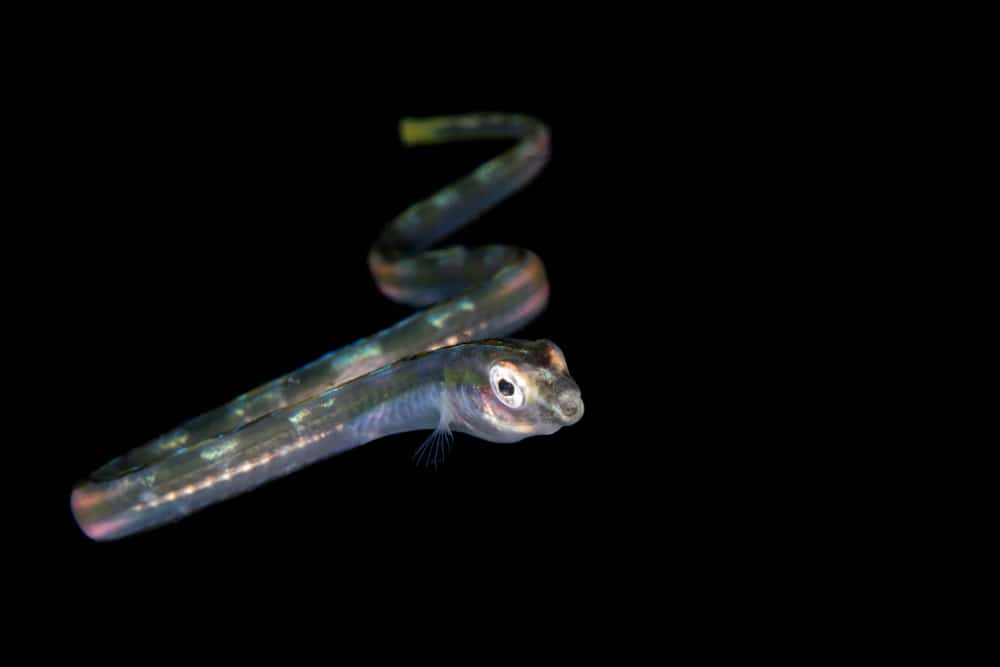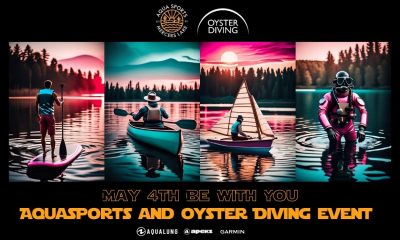News
Blackwater and Bonfire Night Diving at Lembeh Resort, North Sulawesi
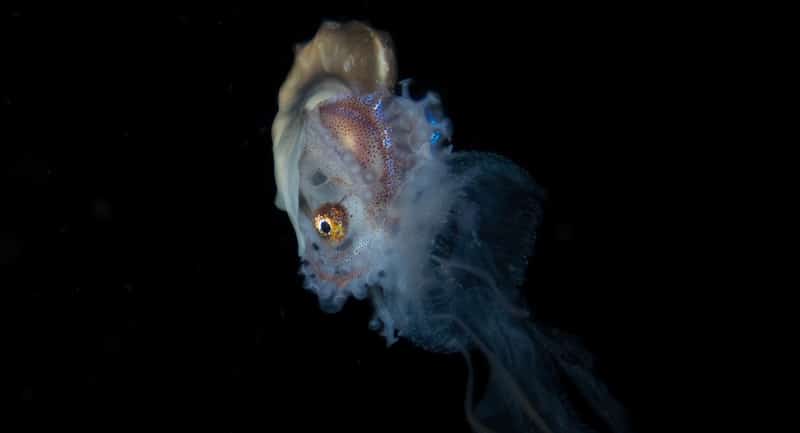
Critters at Lembeh Resort Dive Centre Manager Brigitte Gassner is a huge fan of blackwater and bonfire diving where she is able to spot and photograph critters at their larvae stages. Many of the sightings during these dives are critters which are unseen by the majority of underwater photographers and scuba divers. Brigitte has even been able to spot a paper nautilus at one of Lembeh Resort’s closest dive sites.
Brigitte is passionate about sharing these new diving experiences with guests staying at the luxury Lembeh Resort located on the banks of the Lembeh Strait. But what is bonfire and blackwater diving and how is it different to other night dives?
It all Starts with Plankton
There are two types of plankton; zooplankton (which is animal based) and phytoplankton (which is plant based). These two forms of plankton drift with the ocean currents and are the source of all marine life. The word “Plankton” is derived from the Greek word “Planktos” which translates into English as “drifter” or “wanderer”. Did you know that in one teaspoon of sea water there are literally billions of life forms?
What is Blackwater and Bonfire Diving?
Blackwater diving takes place over deep water, away from the reef. In Lembeh, blackwater dives usually take place in the middle of the Strait. Bright lights are suspended in the water column at various depths up to 25 meters. The lights attract plankton in the water column which in turn attracts intriguing and rarely seen larvae stage critters.
Bonfire diving takes place at shallower depths on the reef or sandy slope – in Lembeh, there is no shortage of suitable dive sites. Bonfire diving is also based around the use of bright lights to attract plankton and both larvae stage and more mature critters.
Blackwater and Bonfire Underwater Photography Subjects
The most iconic blackwater and bonfire dive critters include crustacean and cephalopod larvae and of course the paper nautilus which, to many, is the ultimate of all critters. Other common subjects include jellyfish and other critters which drift freely in the open ocean. Many larvae stage critters do not yet display any coloration and are often translucent as they are still in the early stages of development. Both types of diving feature a lot of critter behavior spotting and imaging opportunities.
Jellyfish are often behavioural hotspots, look out for jellyfish playing host to a range of species from tiny amphipods through to jackfish. The jackfish will enter the jellyfish and use it for protection, it’s often possible to see the jackfish going in and out of the jellyfish as it exits it host to breathe before re-entering.
Blackwater and Bonfire Photography Techniques
Blackwater and bonfire photography require using fast shutter speeds – typically sync speed, as you are capturing images of larvae which is moving. A fast shutter speed will help to “freeze the action”. Shooting with a small aperture, which gives more depth of field, allows for more of the critter to be in focus as opposed to only a small section which is closest to the lens.
Best Times for Blackwater and Bonfire Diving
It’s technically possible to blackwater and bonfire dive at any time but Brigitte says the most abundant dives are around the new moon – up to 4 days before and 3 days after. Around the new moon there is little moon light so the bright dive lights become more active. When there is a full moon there is already light on the surface so the level of activity is dispersed and less centered around the dive lights.
Lembeh Resort
Are you planning a trip to North Sulawesi? Lembeh Resort not only offers marine biology and underwater photography trained dive guides, luxury accommodation and exquisite dining – they are also committed to sustainability and are the 2019 winners of the prestigious Blue Green 360 award for Dive Operator of the Year awarded at ADEX in Singapore.
For more information about Lembeh Resort take a look at their website www.LembehResort.com
Gear News
Scubapro Free Octopus Promotion 2024

Free Octopus with every purchase of a SCUBAPRO regulator system
Just in time for the spring season, divers can save money with the FREE OCTOPUS SPRING PROMOTION! Until July 31st SCUBAPRO offers an Octopus for free
with every purchase of a regulator system!
Get a free S270 OCTOPUS with purchase of these combinations:
MK25 EVO or MK19 EVO with A700
MK25 EVO or MK19 EVO with S620Ti
MK25 EVO or MK19 EVO with D420
MK25 EVO Din mit S620Ti-X
Get a free R105 OCTOPUS with purchase of the following combinations:
MK25 EVO or MK19 EVO with G260
MK25 EVO or MK17 EVO with S600
SCUBAPRO offers a 30-year first owner warranty on all regulators, with a revision period of two years or 100 dives. All SCUBAPRO regulators are of course certified according to the new European test standard EN250-2014.
Available at participating SCUBAPRO dealers. Promotion may not be available in all regions. Find an authorized SCUBAPRO Dealer at scubapro.com.
More information available on www.scubapro.com.
Blogs
Northern Red Sea Reefs and Wrecks Trip Report, Part 3: The Mighty Thistlegorm

Jake Davies boards Ghazala Explorer for an unforgettable Red Sea diving experience…
Overnight, the wind picked up, making the planned morning dive a bit bumpy on the Zodiacs to the drop point on Thomas Reef. There, we would dive along the reef before descending through the canyon and then passing under the arch before ascending the wall with a gentle drift. The site provided great encounters with more pelagic species, including shoals of large barracuda, tuna, and bigeye trevally.
Once back on the boat, it was time to get everything tied down again as we would head back south. This time, with the wind behind us, heading to Ras Mohammed to dive Jackfish Alley for another great gentle drift wall dive before then heading up the coast towards the Gulf of Suez to moor up at the wreck of the Thistlegorm. This being the highlight wreck dive of the trip and for many onboard, including myself, it was the first time diving this iconic wreck. I had heard so much about the wreck from friends, and globally, this is a must on any diver’s list. Fortunately for us, there was only one other boat at the site, which was a rarity. A great briefing was delivered by Ahmed, who provided a detailed background about the wreck’s history along with all the required safety information as the currents and visibility at the site can be variable.

Kitting up, there was a lot of excitement on deck before entering the water and heading down the shoreline. Descending to the wreck, there was a light northerly current which reduced the visibility, making it feel more like the conditions that can be found off the Welsh coast. At 10m from the bottom, the outline of the wreck appeared as we reached the area of the wreck which had been bombed, as our mooring line was attached to part of the propeller shaft. Arriving on deck, instantly everywhere you looked there were many of the supplies which the ship was carrying, including Bren Carrier tanks and projectiles that instantly stood out.

We headed around the exterior, taking a look at the large propeller and guns mounted on deck before entering the wreck on the port side to take a look in the holds. It was incredible to see all the trucks, Norton 16H, and BSA motorcycles still perfectly stacked within, providing a real snapshot in time.

Overall, we had four dives on the Thistlegorm, where for all of the dives we were the only group in the water, and at times, there were just three of us on the whole wreck, which made it even more special, especially knowing that most days the wreck has hundreds of divers. Along with the history of the wreck, there was plenty of marine life on the wreck and around, from big green turtles to batfish, along with shoals of mackerel being hunted by trevally. Some unforgettable dives.

The final leg of the trip saw us cross back over the Suez Canal to the Gobal Islands where we planned to stay the night and do three dives at the Dolphin House for the potential of sharing the dive with dolphins. The site, which included a channel that was teeming with reef fish, especially large numbers of goatfish that swam in large shoals along the edge of the reef. These were nice relaxing dives to end the week. Unfortunately, the dolphins didn’t show up, which was okay as like all marine life they are difficult to predict and you can’t guarantee what’s going to be seen. With the last dive complete, we headed back to port for the final night where it was time to clean all the kit and pack before the departure flight the next day.

The whole week from start to finish on Ghazala Explorer was amazing; the boat had all the facilities you need for a comfortable week aboard. The crew were always there to help throughout the day and the chefs providing top quality food which was required after every dive. The itinerary providing some of the best diving with a nice mixture of wreck and reef dives. I would recommend the trip to anyone, whether it’s your first Red Sea liveaboard in the Red Sea or you’re revisiting. Hopefully, it’s not too long before I head back to explore more of the Red Sea onboard Ghazala Explorer.

To find out more about the Northern Red Sea reef and wrecks itineraries aboard Ghazala Explorer, or to book, contact Scuba Travel now:
Email: dive@scubatravel.com
Tel: +44 (0)1483 411590
Photos: Jake Davies / Avalon.Red
-

 News3 months ago
News3 months agoHone your underwater photography skills with Alphamarine Photography at Red Sea Diving Safari in March
-

 News3 months ago
News3 months agoCapturing Critters in Lembeh Underwater Photography Workshop 2024: Event Roundup
-

 Marine Life & Conservation Blogs2 months ago
Marine Life & Conservation Blogs2 months agoCreature Feature: Swell Sharks
-

 Blogs2 months ago
Blogs2 months agoMurex Resorts: Passport to Paradise!
-

 Blogs2 months ago
Blogs2 months agoDiver Discovering Whale Skeletons Beneath Ice Judged World’s Best Underwater Photograph
-

 Marine Life & Conservation2 months ago
Marine Life & Conservation2 months agoSave the Manatee Club launches brand new webcams at Silver Springs State Park, Florida
-

 Gear Reviews3 months ago
Gear Reviews3 months agoGear Review: Oceanic+ Dive Housing for iPhone
-

 Gear Reviews2 weeks ago
Gear Reviews2 weeks agoGEAR REVIEW – Revolutionising Diving Comfort: The Sharkskin T2 Chillproof Suit



